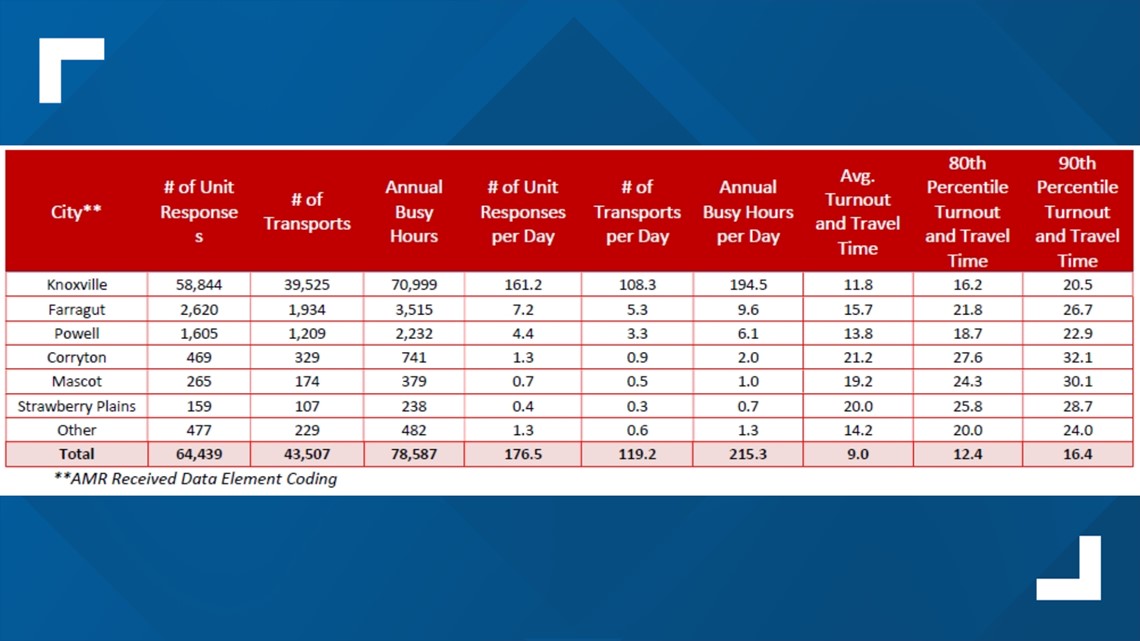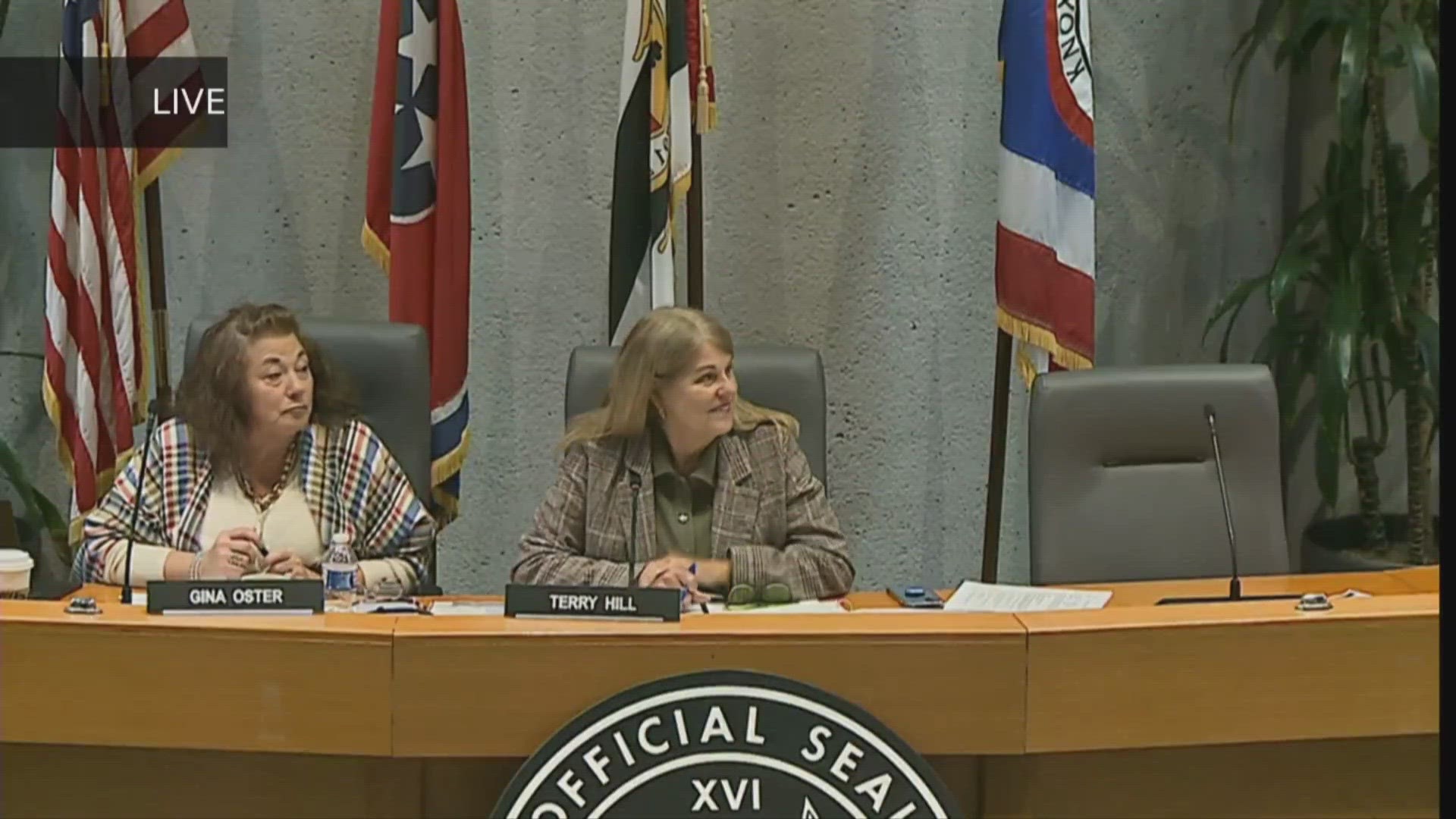KNOXVILLE, Tenn. — Knox County leaders had a chance Monday to review and discuss findings in a report that analyzed the current EMS system.
In January 2023, Fitch and Associates were chosen to evaluate the county's EMS system and make recommendations to enhance future contracts with providers. The firm interviewed people who work in the EMS system, including personnel from fire departments, EMS providers and law enforcement agencies. It also collected several pages of data.
It said in 2022, Knox County received a total of 63,927 service requires, and around 35,600 of them were deemed urgent — more than half of all calls. It made several suggestions on how the system could be improved, such as by partnering with a separate provider to transport dead people instead of an ambulance, or by changing how calls for service are evaluated.


That report highlighted five key findings which it suggested should be quickly addressed. Those key findings are listed below.
Participation in an RFP is financially infeasible for an EMS agency under the current contract design.
First, it said the county's current EMS contract is "financially non-viable." It said that since 2019, expenses have risen for ambulance providers while revenues have decreased. It also said several people that ambulances pick up are "self-pay patients," meaning their ambulance rides may not be covered by health insurance.
"This costs the EMS contractor roughly $4,060,653 every year. There are three primary concerns: extended wall times at hospitals, reduced revenue per transport due to a high percentage of self-pay patients, and a significant rise in expenses since the start of the COVID-19 pandemic. The result is that the current system is financially unsustainable without subsidies or adjustments to performance expectations," the report said.
Response times are not equitable for the community
The report said Knox County's configuration for EMS providers does not take into consideration the population density of different urban, suburban and rural areas. So, it said providers primarily staff urban areas, leading to patients in suburban and rural areas having to wait longer for an ambulance.
"In reviewing response time statistics and data, we recommend realigning response zones to provide equitable response across all areas of the County. This recommendation is derived from the standards for response time set by the International Commission on Fire Accreditation," the report said.
Current hospital wall times are excessive and will prevent any EMS contractor from being successful.
The report said during interviews with AMR, the county's current provider, they learned that "hospital wall times" were increasing. These are times when ambulances must wait along a wall near emergency departments after delivering a patient before a hospital takes custody of them.
"We found that the current wall times are comparable to having 6.662 12-hour shift ambulances waiting idly and unable to respond to any 911 calls," the report said. "The corresponding revenue loss will make it impossible for any EMS contractor to succeed in Knox County. If the issue is not addressed before awarding the RFP, Knox County should be aware that no agency will be able to meet the desired performance standards."
There is a lack of effective and transparent controls in the EMS system for monitoring operational and clinical performance.
The report found that providers manually collect performance and clinic data themselves, and said the county depends on compliance reports compiled directly by EMS contractors. There is no real-time reporting system to assess the EMS system, according to teh report.
"The county should require a software program that automates the process of measuring both clinical and operational performance. This will eliminate the reliance on the EMS contractor to provide the necessary data for performance evaluation," the report said.
The "Mission District" area requires significant resourcing with little to no additional funding
The report said ambulances mostly respond to a specific area in Knoxville, known as the "Mission District." It said resources are limited in the area and suggested assessing the area for ways to provide alternative response units, mobile clinics or other healthcare programs.
By providing other types of services, the report said demand on ambulance services could be reduced.
"It will take a multi-faceted and multidisciplinary approach to reduce the EMS contractor burden. Furthermore, this will require the EMS Contractor, County and City officials, with many other healthcare and non-for-profit partners to support," the report said.

